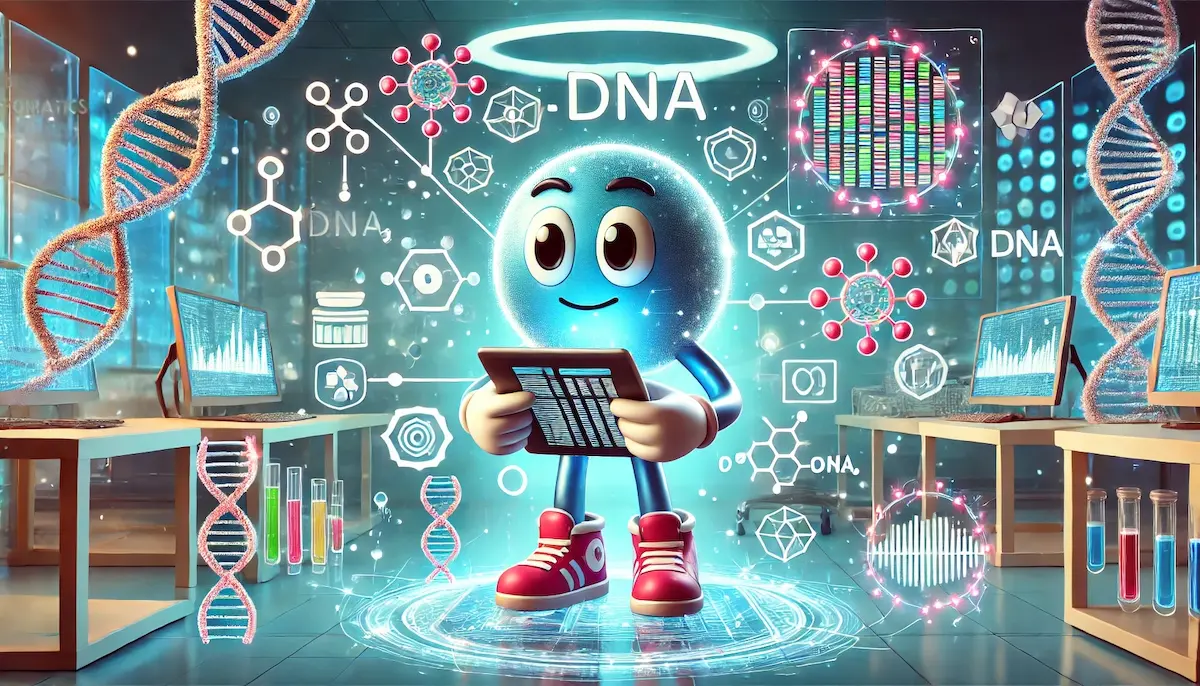Bioinformatics algorithms are specialized computational methods used to analyze biological data, particularly genetic sequences. These algorithms play a crucial role in deciphering the vast amounts of data generated by modern biological research, enabling scientists to understand complex biological systems and make significant advancements in medicine, genetics, and evolutionary biology.
What are Bioinformatics Algorithms?
Bioinformatics algorithms are computational tools designed to solve specific problems in the analysis of biological data. These problems often involve the processing and interpretation of large datasets, such as DNA, RNA, and protein sequences. The algorithms leverage principles from computer science, mathematics, and statistics to uncover patterns, relationships, and functions within this data.
Key Types of Bioinformatics Algorithms
Sequence Alignment
Sequence alignment algorithms compare DNA, RNA, or protein sequences to identify regions of similarity that may indicate functional, structural, or evolutionary relationships.
- Global Alignment: Aligns sequences along their entire length. Examples include the Needleman-Wunsch algorithm.
- Local Alignment: Finds the best matching subsequences. Examples include the Smith-Waterman algorithm.
Genome Assembly
Genome assembly algorithms reconstruct a complete genome sequence from short DNA fragments generated by sequencing technologies.
- De novo Assembly: Assembles genomes without a reference sequence, using algorithms like Overlap-Layout-Consensus (OLC) and de Bruijn graphs.
- Reference-Based Assembly: Aligns sequencing reads to a known reference genome, using tools like BWA (Burrows-Wheeler Aligner) and Bowtie.
Phylogenetic Analysis
Phylogenetic algorithms infer evolutionary relationships between species or genes by constructing phylogenetic trees.
- Distance-Based Methods: Use measures of genetic distance to build trees. Examples include Neighbor-Joining and UPGMA.
- Character-Based Methods: Analyze individual sequence positions to infer relationships. Examples include Maximum Parsimony and Maximum Likelihood methods.
Gene Prediction
Gene prediction algorithms identify regions of the genome that encode genes, predicting where genes are located and their potential functions.
- Ab initio Methods: Predict genes based on sequence features and patterns. Examples include GENSCAN and AUGUSTUS.
- Homology-Based Methods: Use known gene sequences from related species to predict genes. Examples include BLAST and HMMER.
Protein Structure Prediction
Protein structure prediction algorithms determine the three-dimensional structure of a protein based on its amino acid sequence.
- Homology Modeling: Builds models based on known structures of related proteins.
- Ab initio Modeling: Predicts structures from scratch, using physical and chemical principles. Examples include Rosetta and AlphaFold.
Functional Annotation
Functional annotation algorithms assign biological functions to genes and proteins based on sequence similarity, structural features, and other data.
- Gene Ontology (GO) Annotation: Uses a controlled vocabulary to describe gene products in terms of their associated biological processes, cellular components, and molecular functions.
- Pathway Analysis: Identifies biological pathways and networks in which genes and proteins are involved. Tools include KEGG and Reactome.
Applications of Bioinformatics Algorithms
Genomics
Bioinformatics algorithms are essential in genomics for sequencing, assembling, and analyzing genomes. They help identify genetic variations, understand evolutionary relationships, and uncover the genetic basis of diseases.
Transcriptomics
In transcriptomics, algorithms analyze RNA sequences to study gene expression patterns. This helps researchers understand how genes are regulated and how their expression changes in different conditions.
Proteomics
Proteomics uses bioinformatics algorithms to analyze protein sequences and structures. This aids in identifying protein functions, interactions, and their roles in biological pathways.
Drug Discovery
Bioinformatics algorithms accelerate drug discovery by identifying potential drug targets, predicting the effects of drug candidates, and understanding the molecular mechanisms of diseases.
Personalized Medicine
In personalized medicine, bioinformatics algorithms analyze individual genetic data to tailor medical treatments to the patient’s unique genetic profile, improving treatment efficacy and reducing adverse effects.
Challenges in Bioinformatics Algorithms
Data Complexity
Biological data is inherently complex and heterogeneous, requiring sophisticated algorithms to extract meaningful information. The sheer volume of data generated by modern sequencing technologies poses significant computational challenges.
Algorithm Accuracy
Ensuring the accuracy and reliability of bioinformatics algorithms is crucial, as errors can lead to incorrect conclusions and affect downstream analyses. Continuous validation and improvement of algorithms are necessary.
Computational Resources
Bioinformatics analyses often require substantial computational resources, including high-performance computing clusters and efficient data storage solutions. Managing these resources effectively is a critical challenge.
Integration of Data
Integrating diverse types of biological data (e.g., genomic, transcriptomic, proteomic) to provide a comprehensive understanding of biological systems is complex. Algorithms must be capable of handling multi-omics data integration.
The Future of Bioinformatics Algorithms
The future of bioinformatics algorithms is promising, with advancements in machine learning, artificial intelligence, and high-throughput technologies driving innovation. These developments are expected to improve the accuracy, efficiency, and scope of bioinformatics analyses, leading to new insights and applications in biology and medicine.
Machine Learning and AI
Machine learning and AI are increasingly being integrated into bioinformatics algorithms, enabling more sophisticated data analysis and pattern recognition. These technologies can enhance gene prediction, protein structure prediction, and functional annotation.
Cloud Computing
Cloud computing offers scalable and flexible computational resources, making bioinformatics analyses more accessible and cost-effective. Cloud-based platforms enable researchers to perform complex analyses without the need for extensive local infrastructure.
Big Data Analytics
The ability to analyze and interpret large-scale biological data is becoming increasingly important. Big data analytics tools and techniques are being developed to manage and extract insights from massive datasets generated by high-throughput sequencing technologies.
Blockfine thanks you for reading and hopes you found this article helpful.
